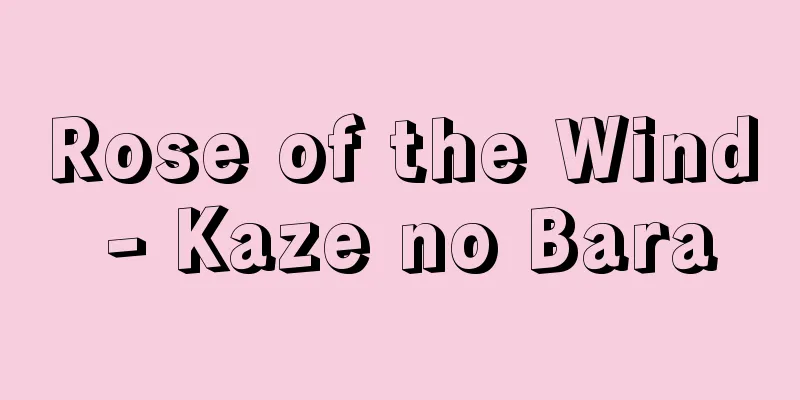Djibouti - Djibouti (English spelling)

|
A small country located in northeastern Africa, on the west coast of the Strait of Babel-Mandeb, which connects the Gulf of Aden (Indian Ocean) and the Red Sea. Its official name is the Republic of Djibouti. It borders Somalia to the southeast, Eritrea to the north, and Ethiopia to the west and south. Formerly the French overseas territory of Afar-Issa, it became an independent country in 1977. The country is divided into two groups, the Somali Issa and the Ethiopian Afar, and the conflict between them is a serious problem. It has an area of 23,000 square kilometers and a population of 630,000 (estimated as of 2000). The capital is Djibouti City. [Ken Akasaka] NatureThe country is made up of mountains surrounding the Gulf of Tadjoura, which penetrates deep into the Gulf of Aden, and is located in the Great Rift Valley, making it very rugged. The highest peak is Mount Musa Ali (2,063 meters) on the northern border. The center of the country is a low-lying plateau, and Lake Assal is below sea level. Most of the country is dry desert or semi-desert, with little vegetation. Annual precipitation is low, at 110 to 170 mm. The hot season is from June to September, with an average temperature of 30 to 40 degrees Celsius, and from October to May it is relatively cool, but still only 25 to 30 degrees Celsius. [Ken Akasaka] historyFrance, which began construction of the Suez Canal in 1859, advanced into this area, a key point on the Suez sea route, in 1862 and leased the ports of Obok and Tadjoura on the northern shore of the Gulf of Tadjoura from the Sultan. In 1888, the new port of Djibouti was constructed on the southern shore of the Gulf of Tadjoura, and together these ports formed a colony called the French Somali Coast in 1897. With the opening of the Suez Canal in 1869, the port of Djibouti developed as a coal supply port, and in 1917 a railway was opened from Djibouti to Addis Ababa in Ethiopia, and Djibouti has since played the role of an outer port for Ethiopia. After World War II, in 1947, it became an overseas department of France and was called French Somaliland, and in 1956 it established an autonomous government. The Issa supported the Greater Somalia Plan, which aimed to unify the Somali people, and insisted on complete independence from France, so Ethiopia, which relied on rail transport from France and the port of Djibouti, supported an autonomous government for the Afar people. Referendums in 1958 and 1967 decided to remain part of France, and in July 1967 it was renamed French Afar-Issa. In the 1970s, five political parties, including the Issa People's Union for African Independence (LPAI) and the Afar National Union for the Independence of the People (UNI), united and decided on independence in a referendum in May 1977, achieving independence on June 27 as the Republic of Djibouti. [Ken Akasaka] Politics and EconomyThe first president was Hassan Guled, an Issa man, who launched a "detribalism policy" and based his politics on a policy of balancing the two tribes that divide the country, the Issa and the Afar. In the 1992 general elections, which were based on a multi-party system, the Progressive People's Union (RPP) won all seats in parliament. In the following year's presidential election, President Guled was re-elected for a fourth term. In 1994, a peace agreement was also reached with the rival Front for the Restoration of United Democracy (FRUD), an Afar party. In the 1997 general election, the ruling coalition of the RPP and FRUD won all seats in parliament. Agriculture is stagnant due to the dryness of the country, and only vegetable cultivation is practiced in oases and in the suburbs of cities. More than half of the population is engaged in livestock farming, including cattle, sheep, goats, and camels, and livestock products and leather are important export products. Until the closure of the Suez Canal in 1967, port revenues from the port of Djibouti played an important role, but even after the canal reopened in 1975, it did not regain its former strength. Railway transport to Ethiopia was also suspended for two years from 1977 due to the Ethiopian civil war, which caused a major blow as transport revenues plummeted. Gross national product (GNP) is $448 million, with a per capita figure of $780 (1995). Total exports were $16 million, while total imports were $219 million (1995), resulting in a large import surplus. As for trading partners, Somalia accounts for 42% of exports, and Thailand for 15% of imports (1995). The country imports automobiles, cotton textiles, tires, and other products from Japan annually, worth $17.45 million (1994). [Ken Akasaka] Society and CultureThe country is divided into two ethnic groups, the Issa (60%) and the Afar (35%). The Issa in the south are of Somali descent and live across Somalia. The Afar in the north live across northeastern Ethiopia and are known in Ethiopia as the Danakil. Both tribes are pastoralists, raising livestock such as camels, sheep, goats, cattle and donkeys. However, the Issa make up the majority of the urban population in Djibouti and other cities. Both are Sunni Muslims. Arabs and French people also live in the country. The official language is Arabic, but other major languages spoken are Afar, Somali, and French. The majority of the population is Muslim, but there are also approximately 22,000 Catholics living in the country. There are 27,844 students in public primary schools, 6,892 in public secondary schools, and 1,074 in technical schools (1989). There are 17,000 television sets (1993), and 13,300 cars (1993). [Ken Akasaka] [Supplementary Material] |"> Djibouti flag ©Shogakukan Illustration/Shogakukan Creative "> Djibouti Location Map Source: Shogakukan Encyclopedia Nipponica About Encyclopedia Nipponica Information | Legend |
|
アフリカ北東部、アデン湾(インド洋)と紅海を結ぶバベル・マンデブ海峡西岸に位置する小国。正称はジブチ共和国République de Djibouti。南東はソマリア、北はエリトリア、西、南はエチオピアと国境を接する。旧フランス海外領アファール・イッサで、1977年独立国となった。住民はソマリ系のイッサ人とエチオピア系のアファール人が国を二分しており、その対立が深刻な問題となっている。面積2万3000平方キロメートル、人口63万(2000推計)。首都ジブチ市。 [赤阪 賢] 自然国土はアデン湾から深く入り込んだタジュラ湾を囲む山地からなり、アフリカ大地溝帯の中にあるため起伏が激しい。最高峰は北部国境にあるムーサ・アリ火山(2063メートル)。国の中央は低平な台地で、アサル湖は海面より低い。国土の大部分は砂漠や半砂漠の乾燥地帯で、植生は乏しい。年降水量は110~170ミリメートルと少ない。6月から9月は酷暑の季節で、平均30~40℃、10月から5月にかけては比較的に涼しいが、それでも25~30℃に及ぶ。 [赤阪 賢] 歴史1859年スエズ運河の建設に着工したフランスは、62年スエズ航路の要衝であるこの地に進出し、タジュラ湾北岸のオボク、タジュラの両港をスルタン藩王から租借した。1888年にはタジュラ湾南岸に新しくジブチ港を建設し、これらをあわせて97年フランス領ソマリ海岸とよばれる植民地をつくった。ジブチ港は1869年のスエズ運河の開通とともに石炭補給港として発展、また、1917年にはジブチからエチオピアのアディス・アベバに達する鉄道が開通し、以後ジブチはエチオピアの外港の役割を果たすようになった。第二次世界大戦後の1947年、フランスの海外県となってフランス領ソマリランドと称し、56年には自治政府を樹立した。イッサ人はソマリ人の統合を図る大ソマリア計画を支持し、フランスからの完全独立を主張したため、フランスとジブチ港からの鉄道輸送に頼るエチオピアはアファール人の自治政府を支持した。1958年および67年の住民投票ではフランス領にとどまることが決定され、67年7月にはフランス領アファール・イッサと改称した。70年代に入り、イッサ人のアフリカ人民独立連合(LPAI)とアファール人の独立民族連合(UNI)をはじめとする5政党が大同団結し、77年5月の住民投票で独立を決定、6月27日ジブチ共和国として独立を達成した。 [赤阪 賢] 政治・経済初代大統領はイッサ人のハッサン・グレドが就任、「脱部族政策」を打ち出し、国を二分するイッサ、アファール両部族の均衡政策を政治の基本としている。1992年の複数政党制に基づく総選挙で進歩人民連合(RPP)が全議席を独占した。翌年の大統領選挙でグレド大統領が4選を果たした。また94年には、対立するアファール人の統一民主回復戦線(FRUD)とも和平合意が成立した。97年の総選挙では、RPPとFRUDの連立与党が全議席を獲得した。 国土が乾燥地帯のため農業は不振で、オアシスや都市近郊での野菜栽培などにとどまる。住民の半数以上は、ウシ、ヒツジ、ヤギ、ラクダなどの牧畜に従事し、畜産物や皮革は輸出の重要産品の一つとなっている。1967年にスエズ運河が閉鎖されるまでは、ジブチ港の港湾収入が重要な位置を占めたが、75年の再開後も往時の勢いは戻らなかった。エチオピアへの鉄道輸送も、1977年から2年間エチオピアの内戦のため中断され、輸送収入が激減して大きな打撃を受けた。国民総生産(GNP)は4億4800万ドルで、1人当りでは780ドル(1995)である。輸出総額は1600万ドル、輸入総額は2億1900万ドル(1995)で、大幅な輸入超過となっている。貿易相手国は輸出はソマリアが42%、輸入はタイが15%(1995)を占める。日本からは、自動車、綿織物、タイヤなどを年間1745万ドル(1994)輸入している。 [赤阪 賢] 社会・文化住民はイッサ人(60%)とアファール人(35%)で国を二分している。南部のイッサ人はソマリ系でソマリアにまたがって居住している。北部のアファール人はエチオピア北東部にまたがって居住し、エチオピアではダナキル人とよばれている。両部族とも牧畜民であり、ラクダ、ヒツジ、ヤギ、ウシ、ロバなどの家畜を飼育している。しかしイッサ人はジブチなどの都市人口の大半を占める。ともにスンニー派のイスラム教徒である。ほかにアラブ人やフランス人も居住する。 公用語はアラビア語であるが、ほかにおもな言語として、アファール語、ソマリ語、フランス語が用いられている。宗教はイスラム教徒が大部分であるが、カトリック教徒も約2万2000人居住している。教育は公立初等学校2万7844人、同中等学校6892人、技術学校1074人(1989)の児童・生徒がいる。テレビ台数は1万7000台(1993)、乗用車は1万3300台(1993)となっている。 [赤阪 賢] [補完資料] |"> ジブチの国旗 ©Shogakukan 作図/小学館クリエイティブ"> ジブチ位置図 出典 小学館 日本大百科全書(ニッポニカ)日本大百科全書(ニッポニカ)について 情報 | 凡例 |
<<: Djibouti [City] (English spelling)
Recommend
Xu Ben (English spelling)
1335‐93 A Chinese literati painter in the late Yua...
Cape Hagachi
A cape in Minamiizu Town, Kamo District, in the so...
Ion Conduction - Ion Dendou
The phenomenon in which electric charge is transp...
Cat's-ear (English spelling)
...It is especially common in Hokkaido. Its Engli...
gaṇa (English spelling) gana
…A tribal republic is a state that does not have ...
Forbidden Colors
These are the colors of clothing and fabrics used...
Taboo - Kinki
〘noun〙① To forbid approaching or coming into conta...
Pregl - Fritz Pregl
Austrian organic chemist. Born September 3 in Lai...
Arc-et-Senans (English spelling)
…This is most evident in the plan for the ideal c...
chemical affinity
…The Greek Empedocles explained this in terms of ...
Skink
…A general term for reptiles with well-developed ...
Tenerife lace (English spelling) tenerifelace
In the narrow sense, lace made by knotting thread...
Welding - Welding (English spelling)
Welding is a method of joining two solid material...
Gravitational field - gravitational field
The space in which gravity acts. A quantity calle...
Potatoes - Imorui
…In agriculture, food crops are divided into edib...









